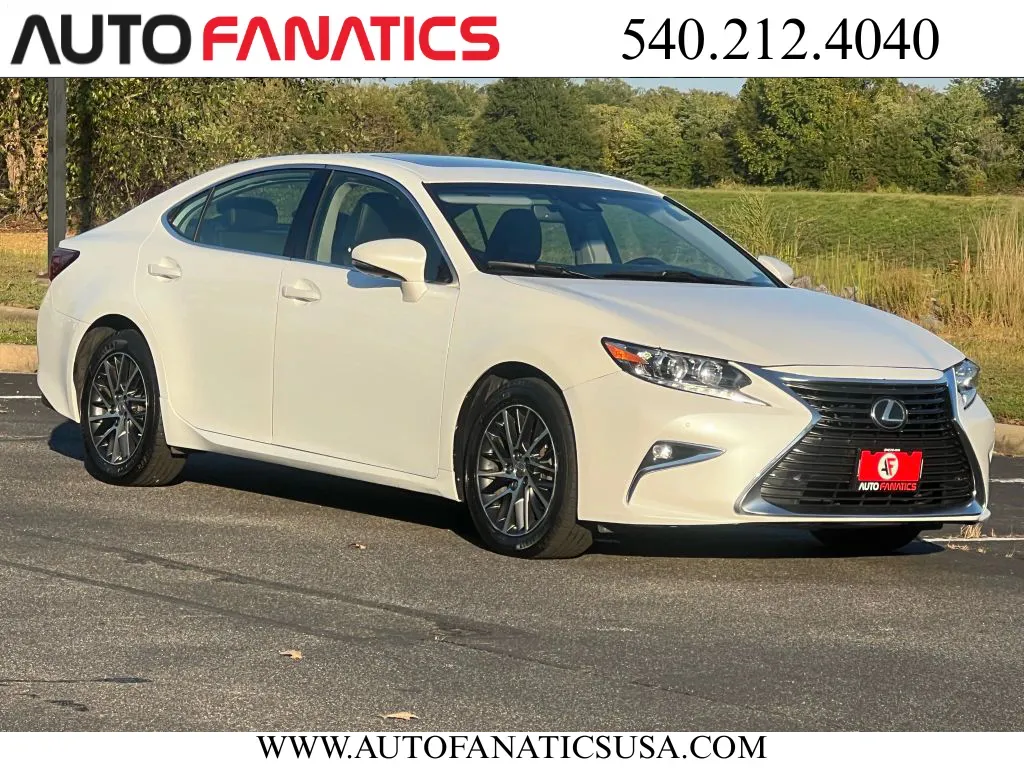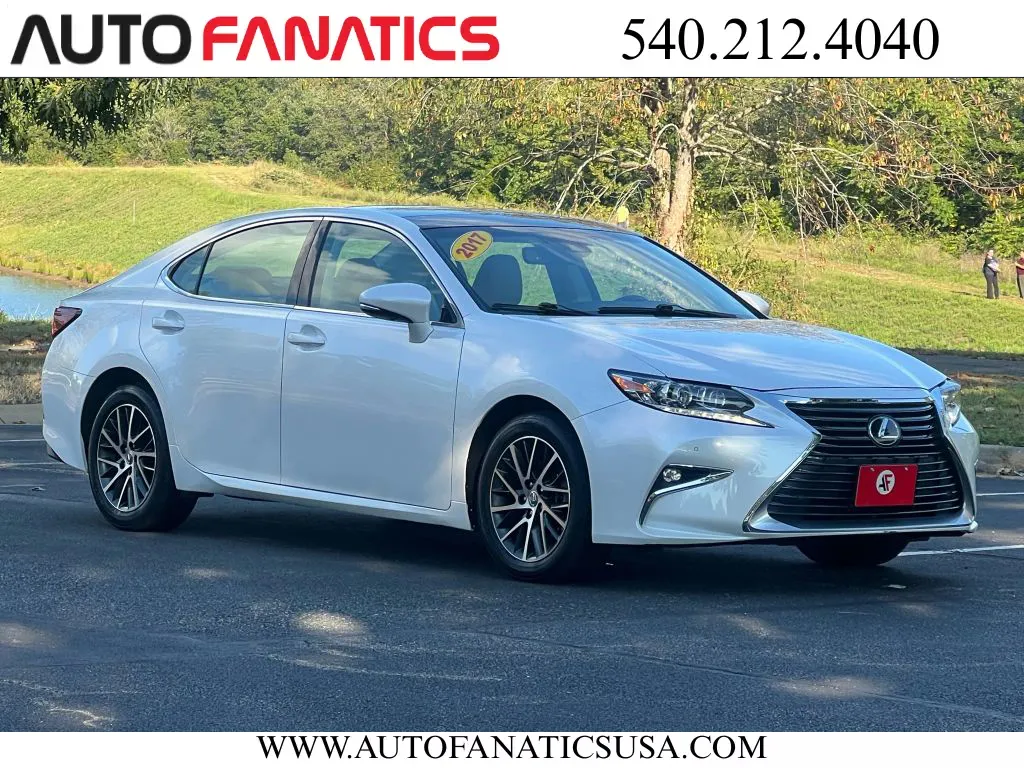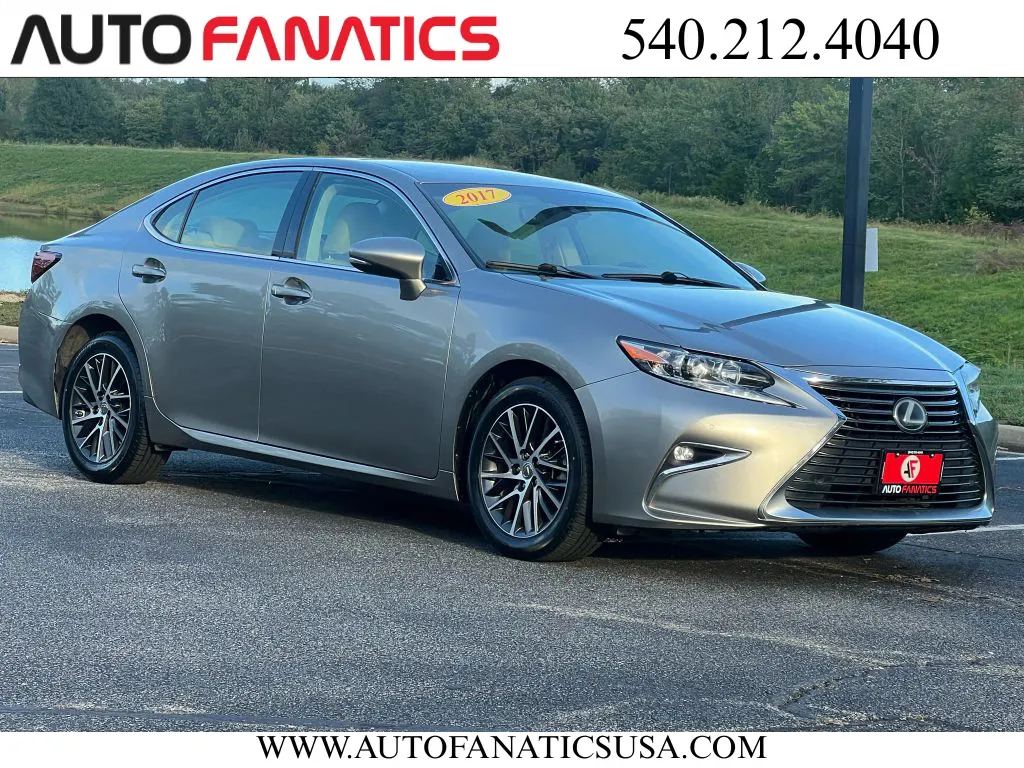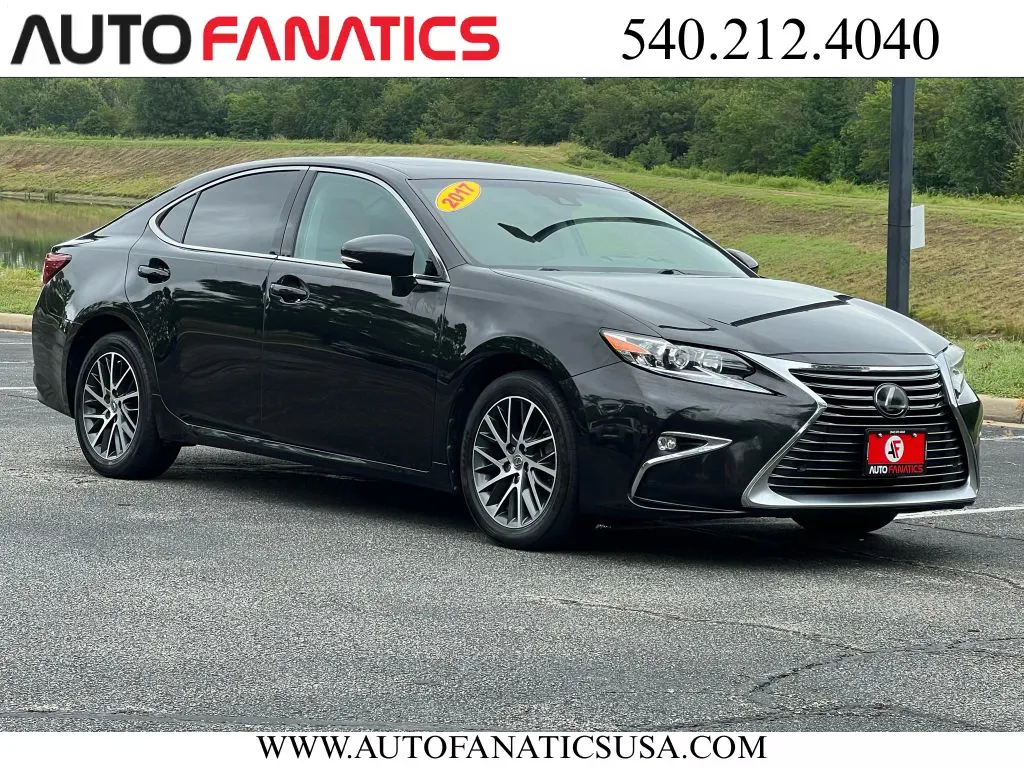How to Estimate Car Payment Monthly The Easy Way
The excitement of finding the perfect car can quickly turn to anxiety when it’s time to talk numbers. The best way to replace that stress with confidence is by understanding your potential costs ahead of time. When you know how to estimate car payment monthly, you can walk into the process with a clear budget and a solid plan. It empowers you to focus on finding the right vehicle without worrying about financial surprises. This feeling of control is exactly what we aim for at Auto Fanatics. Our transparent, no-pressure process, celebrated in over 500 five-star reviews, is designed to make you feel supported every step of the way.
Key Takeaways
- Budget for the total cost of ownership: Your monthly payment is just one piece of the puzzle. To get a true sense of affordability, factor in ongoing expenses like insurance, fuel, and potential maintenance from the start.
- Do your financial homework before you shop: Getting pre-approved for a loan and knowing your credit score are the most powerful steps you can take. This preparation puts you in control, helps you secure a better interest rate, and saves you money.
- Focus on the total loan cost, not just the monthly payment: A low payment can be tempting, but it often means a longer loan term where you pay more in total interest. Aim for the shortest loan term that fits your budget to pay off your car faster and reduce your overall cost.
What Makes Up Your Monthly Car Payment?
Figuring out a monthly car payment can feel like solving a puzzle with a lot of moving parts. But once you understand what goes into that final number, you can arrange the pieces to fit your budget perfectly. It’s all about knowing the key ingredients: the loan amount, the interest rate, and the time you have to pay it back. Getting a handle on these basics is the first step toward making a smart, confident purchase. It puts you in the driver’s seat of your finances, ensuring there are no surprises down the road.
At Auto Fanatics, we believe in total transparency, which is why we want to walk you through exactly how your payment is calculated. Our goal is to make you feel comfortable and informed, a commitment that’s earned us over 500 five-star customer reviews. Let’s break down the factors that shape your monthly payment, look at how your credit score fits in, and bust a few common myths along the way.
Key Factors That Set Your Payment
Three main things determine your monthly car payment: the principal, the interest rate, and the loan term. The principal is the total amount you borrow to buy the car. Naturally, a more expensive car is likely to require a larger loan with bigger monthly payments. This amount is calculated after you subtract your down payment and the value of your trade-in from the vehicle’s price. The interest rate is the percentage the lender charges for loaning you the money. Finally, the loan term is the length of time you have to pay it all back, usually expressed in months (like 48, 60, or 72 months). Together, these three elements form the foundation of your payment.
How Your Credit Score Plays a Role
Your credit score is one of the most significant factors in securing an auto loan because it tells lenders how reliable you are with credit. A higher score generally signals lower risk, which means you’re more likely to qualify for a lower interest rate. A lower interest rate can save you hundreds or even thousands of dollars over the life of the loan. As one financial institution notes, "Low credit scores are unlikely to garner a low interest rate car loan regardless of the down payment amount." If your credit isn't perfect, don't worry. We work with a variety of lenders to find great financing solutions for our customers. You can even get pre-qualified online to see where you stand.
Common Car Payment Myths, Busted
Let’s clear up a couple of common misconceptions about car payments. First, the idea that a huge down payment is always the best strategy isn't necessarily true. While a large down payment reduces your loan amount and lowers your monthly payment, it also means you have less cash on hand for other things. It’s about finding a balance that works for your financial situation. Another major myth is focusing only on getting the lowest possible monthly payment. Lenders can lower your payment by extending the loan term, but this often means you'll pay more in total interest over time. It’s always wise to look at the big picture, not just the monthly number. Our car loan calculator can help you see how different terms affect your total cost.
The 5 Core Factors in Your Car Payment
When you're figuring out a car budget, the monthly payment is usually the number you focus on most. But what actually goes into that number? It’s not just the price of the car. Several key factors work together to determine what you’ll pay each month, and understanding them is the first step toward a smart purchase. Think of it like a recipe—each ingredient affects the final result. By getting familiar with these five core elements, you can adjust them to find a payment that fits comfortably into your life.
This knowledge puts you in the driver's seat during the financing process, helping you spot a great deal and avoid any surprises down the road. It transforms the experience from something that feels complicated into a series of clear, manageable choices. At Auto Fanatics, our goal is to make you feel completely confident in your decision, which is why we believe in total transparency. We've earned over 500 five-star reviews by being open and helpful, and that starts with explaining exactly how your payment is calculated. We want you to see the full picture, not just a single monthly figure. Let's break down these moving parts so you can feel prepared and in control of your financial future.
Vehicle Price & Your Trade-In
It makes sense that the price of the car is the biggest factor in your payment. A more expensive vehicle means a larger loan, which naturally leads to a higher monthly bill. That’s why it’s so helpful to start by browsing our inventory of cars, trucks, and SUVs to get a feel for prices. But the sticker price isn't the final word. If you have a car to trade in, its value can significantly lower the amount you need to finance. Think of your trade-in as a large down payment that instantly reduces the loan principal. You can easily get an estimate for your trade-in value online to see how much you could save.
The Power of a Down Payment
A down payment is the cash you pay upfront when you buy a car, and it’s one of the most powerful tools you have for managing your loan. The more you can put down, the less money you'll need to borrow. This directly lowers your monthly payment and reduces the total interest you'll pay over the life of the loan. A solid down payment also helps you build equity in your vehicle faster, protecting you from being "upside down" on your loan if the car's value depreciates. Even a small increase in your down payment can make a noticeable difference in your budget.
Why Your Interest Rate Matters
Your interest rate is essentially the fee you pay for borrowing money. It's expressed as a percentage of the loan amount, and it has a huge impact on both your monthly payment and the total cost of your car. A lower interest rate means you pay less to the lender over time. Your credit score is the main factor lenders use to determine your rate—a higher score typically gets you a better offer. That's why it's a great idea to get pre-qualified for financing early on. It gives you a clear picture of the interest rate you can expect, so you can shop with a realistic budget in mind.
How Loan Length Affects Your Payment
The loan term, or the length of time you have to repay the loan, is another key piece of the puzzle. You might see offers for longer terms, like 72 or 84 months, which result in a lower monthly payment. While that can seem appealing, remember that a longer loan means you'll pay more in total interest. A shorter loan term will have higher monthly payments, but you'll pay the car off faster and save money on interest. Our car loan calculator is a great tool for playing with different loan terms to see how they affect your payment and find a balance that works for you.
Watch Out for Hidden Costs
Your monthly payment is just one part of the total cost of owning a car. It’s easy to forget about the other expenses that come with it. When you're budgeting, be sure to account for things like sales tax, title, and registration fees, which are typically rolled into the loan or paid at signing. You should also consider the ongoing costs of insurance, fuel, and routine maintenance. To protect yourself from unexpected repair bills, you might also want to look into vehicle protection plans. Thinking about the big picture ensures your new car fits your lifestyle and your budget without any stressful surprises.
How to Calculate Your Monthly Payment
Figuring out your monthly car payment is one of the most important steps in the car-buying process. It transforms a vehicle's sticker price into a real number that fits into your monthly budget. Knowing this figure ahead of time helps you shop with confidence and clarity. Let’s break down the easiest ways to calculate your payment and understand the key terms you’ll encounter.
Use Our Easy Payment Calculator
The quickest and most straightforward way to estimate your monthly costs is to use an online tool. Our car loan calculator is designed to do the heavy lifting for you. You can input the vehicle price, your down payment, your trade-in value, and the loan term to see an estimated monthly payment instantly. The best part is that you can adjust these numbers to see how different scenarios affect your payment. For example, you can see how a larger down payment or a shorter loan term changes the monthly amount and the total interest you'll pay over the life of the loan. It’s a simple, no-pressure way to find a payment that feels comfortable for you.
Do the Math Yourself
If you prefer to understand the mechanics behind the numbers, the calculation for a car payment involves three main components: the principal loan amount (the car price minus your down payment and trade-in), the interest rate, and the loan term (the number of months you have to pay it back). The actual formula is a bit complex, but knowing these elements helps you see what you can influence. A lower principal, a better interest rate, or a different term will directly impact your final payment. While our calculator handles the complex math, understanding these core factors empowers you to make smarter decisions when structuring your auto loan.
The Advantage of Getting Pre-Qualified
One of the smartest moves you can make before you even start browsing for cars is to get pre-qualified for a loan. Getting pre-qualified gives you a clear picture of what you can afford and the interest rate you’ll likely receive, all without impacting your credit score. It’s a simple process that turns you from a window shopper into a buyer with a firm budget. When you get pre-qualified with Capital One through our site, you can shop with the confidence of a cash buyer, knowing exactly which vehicles fit your financial plan. This step saves time and removes any guesswork from the financing process.
APR vs. Interest Rate: What's the Difference?
You’ll see two terms when you look at auto loans: interest rate and APR. They might seem similar, but there’s a key difference. The interest rate is simply the percentage a lender charges you to borrow money. The Annual Percentage Rate (APR), however, gives you a more complete picture. It includes the interest rate plus any additional lender fees, like loan origination fees. Because of this, the APR is the true cost of borrowing. When you’re comparing loan offers from different lenders, always use the APR. It ensures you’re making an apples-to-apples comparison and can help you find the most affordable financing option available.
Smart Ways to Lower Your Payment
Finding the perfect car is exciting, but you also want to make sure the monthly payment fits comfortably into your budget. The good news is you have more control over that number than you might think. With a few strategic moves, you can significantly lower your monthly payment and the total amount you pay over the life of the loan. It’s all about being prepared and knowing where to focus your efforts. Let’s walk through some of the most effective ways to make your next car more affordable.
Work on Your Credit Score
Your credit score is one of the most influential factors in determining your auto loan's interest rate. Lenders use it to gauge how likely you are to repay your loan, so a higher score often translates to a lower interest rate and, consequently, a smaller monthly payment. Before you start shopping, it’s a great idea to check your credit report. You can get a free copy from AnnualCreditReport.com. If your score isn't where you'd like it to be, take some simple steps to improve it. Focus on making all your debt payments on time and try to keep your credit card balances low. Even a small improvement can save you hundreds over time.
Increase Your Down Payment
A larger down payment is one of the most direct ways to lower your monthly car payment. The more money you put down upfront, the less you need to borrow. This not only reduces your monthly bill but can also help you secure a better interest rate from lenders. A substantial down payment also helps you build equity in your vehicle faster, reducing the risk of owing more than the car is worth. You can use a car loan calculator to see exactly how different down payment amounts affect your monthly costs. It’s a powerful tool for finding a payment that feels right for your financial situation.
Negotiate the Car's Price
Feeling confident about the price of your car is key to a great buying experience. While the word "negotiate" can sound intimidating, it’s really about ensuring you get a fair, transparent price. At Auto Fanatics, we build our entire process around this idea. With over 500 five-star reviews, our reputation is built on no-pressure sales and clear, upfront pricing on our entire inventory of used cars. We encourage you to do your research and compare prices. Our team is here to work with you to find a high-quality vehicle that fits your budget, ensuring you drive away happy.
Maximize Your Trade-In Value
If you have a car to trade in, think of it as a down payment on wheels. The higher the value you get for your trade-in, the less you'll need to finance for your next vehicle. To get the best possible offer, make sure your car is clean inside and out, gather your maintenance records, and take care of any minor, inexpensive fixes. A little effort can go a long way. You can get a great starting point by using our online tool to get your trade-in value. It’s a quick way to understand what your car is worth and how it can help lower your payments.
Choose the Right Loan Term
Deciding on your car loan's length, or "term," is a key financial choice. It directly impacts your monthly payment and the total amount you'll pay over time. While a longer loan offers a lower monthly payment, a shorter one could save you a lot in interest. It’s all about finding the sweet spot that fits your budget without costing you more than necessary. Let's break down what you should consider when picking your loan term.
Short-Term vs. Long-Term Loans
When you see options like a 60-month versus a 72-month loan, you're comparing a five-year loan to a six-year one. Many people lean toward longer terms because spreading the cost out makes the monthly payment smaller and seem more manageable. While this can help with a tight budget, it's important to know the trade-offs. A shorter loan term means a higher monthly payment, but you'll pay off your car faster and build equity much more quickly.
How Loan Length Impacts Your Interest Rate
One of the biggest benefits of a shorter loan term is that you’ll often get a lower interest rate. For lenders, a shorter loan is less risky because you're paying the money back faster. They often reward this lower risk with a better interest rate, which means less of your money goes toward interest charges. Over the life of the loan, even a small difference in your interest rate can add up to hundreds of dollars in savings.
Look at the Total Cost, Not Just the Payment
It’s easy to focus only on the monthly payment, but that number doesn’t tell the whole story. A longer loan term, while offering a lower payment, almost always means you'll pay more in total interest. The longer the loan, the more time interest has to build up. Before you commit, it’s a great idea to play with the numbers. You can use a car loan calculator to see how different terms affect your total cost.
Find a Payment Schedule That Works for You
The best loan term is one that comfortably fits your personal budget. A great rule of thumb is to keep your car payment at or below 10% of your monthly take-home pay. When you add in other vehicle expenses like insurance and gas, your total transportation costs shouldn't exceed 20% of your income. This helps ensure you can afford your car without financial stress. Getting pre-qualified for financing also helps you understand what you can afford before you start shopping.
Plan for the Total Cost of Ownership
Your monthly payment is the number everyone focuses on, but it’s really just the starting point. To get a true picture of what your car will cost, you need to think about the total cost of ownership. This is a term for all the other expenses that come with having a car—things like insurance, gas, and routine maintenance. Planning for these costs from the beginning is the best way to make sure your new car is a source of joy, not financial stress. It helps you find a vehicle that fits your lifestyle and your budget, so let's walk through the key expenses to keep in mind.
Car Insurance
Before you even drive off the lot, you’ll need car insurance. If you’re financing your vehicle, your lender will almost certainly require you to have "full coverage," which includes comprehensive and collision policies. This is more expensive than basic liability insurance, so it’s a good idea to get a few quotes from insurance companies for the specific cars you’re considering. Your driving record, age, and where you live in the Fredericksburg area will all influence your rate. Factoring this cost in from the start ensures your total monthly car expense is manageable.
Maintenance and Repairs
Every car needs regular maintenance to run smoothly—think oil changes, tire rotations, and new brakes. It’s smart to set aside a little money each month for these routine services. You also have to consider the possibility of unexpected repairs. It’s a common scenario for a manufacturer's warranty to expire while you’re still paying off your auto loan. This can leave you responsible for covering a sudden repair bill out of pocket, which is never fun. Planning for these potential costs gives you a financial cushion and a lot more peace of mind.
Taxes and Registration Fees
When you buy a car, a few one-time costs will pop up that you’ll want to budget for. Here in Virginia, you’ll pay a sales tax on the vehicle’s purchase price, which is added to your total. You’ll also have fees for the title and registration at the DMV to get your new license plates. While they aren't part of your monthly payment, these costs can add up. We believe in being completely upfront about every number, which is why our team will always walk you through these figures. You’ll know exactly what to expect before you sign anything—that’s part of the transparent experience our customers love.
Vehicle Protection Plans
To safeguard against those unexpected repair costs we talked about, you might want to consider a vehicle protection plan. These plans act as a safety net, covering the cost of major repairs after the original factory warranty ends. This can be especially helpful if you plan on keeping your car for several years. At Auto Fanatics, we offer a variety of automotive protection plans to give you confidence in your purchase and protect you from expensive, unforeseen mechanical issues. It’s an extra layer of security for your investment.
Fuel and Daily Expenses
Finally, don’t forget the day-to-day costs of driving. The price of gas is a major one, and it can fluctuate. Think about your daily commute and how much driving you typically do to estimate your monthly fuel budget. You should also account for any other regular expenses like parking fees or tolls. A helpful guideline is to keep your total car-related expenses—your payment, insurance, gas, and maintenance—at or below 20% of your take-home pay. Using our car loan calculator can help you see how different payments fit into this budget.
How to Secure the Best Auto Loan
Finding the perfect car is exciting, but securing the right auto loan is what makes it a smart financial move. A great loan can save you thousands of dollars over time, while the wrong one can add unnecessary stress. The good news is that you have a lot of control over the process. By being prepared and knowing what to look for, you can confidently find a financing option that fits your budget and puts you in the driver's seat. Think of it as your financial road map to a new car. With a little planning, you can avoid common pitfalls and make the entire experience smoother and more affordable. Let’s walk through the key steps to getting the best auto loan possible.
Get Pre-Approved First
Walking into a dealership with a pre-approval letter is like having a superpower. It shows you’re a serious buyer and gives you a firm budget to work with, which helps you focus on the cars you can comfortably afford. Getting pre-approved means a lender has reviewed your financial information and has tentatively agreed to lend you a specific amount at a certain interest rate. This takes the guesswork out of financing and lets you negotiate the vehicle's price with confidence. At Auto Fanatics, we make this step easy. You can get pre-qualified with Capital One right on our website to see where you stand before you even start shopping.
Compare Your Lender Options
Don't feel pressured to accept the first loan offer you receive. Interest rates can vary significantly between lenders, so it pays to shop around. Check with your personal bank, local credit unions, and online lenders. Dealerships, like us, also have relationships with multiple financial institutions and can often find you a competitive rate. Your credit score is a major factor here; as one financial institution notes, "Low credit scores are unlikely to garner a low interest rate car loan regardless of the down payment amount." By comparing offers, you can see who is willing to give you the best terms based on your financial situation and choose the one that saves you the most money.
Gather the Right Documents
Being prepared with the right paperwork will make your loan application process quick and painless. Lenders need to verify your identity, income, and residence, so having everything ready ahead of time is a smart move. Generally, you’ll need your driver’s license, Social Security number, proof of income (like recent pay stubs or tax returns), and proof of residence (such as a utility bill). It’s also a good idea to work on your credit before you apply. As experts suggest, you can improve your credit score by making on-time payments and keeping your credit card balances low.
Understand Your Loan's Terms
The monthly payment is important, but it’s not the only number you should focus on. Before you sign anything, make sure you fully understand all the terms of your loan. Look at the Annual Percentage Rate (APR), which includes the interest rate plus any fees, as this represents the true cost of borrowing. Also, consider the loan term—the number of months you have to repay the loan. A longer term means lower monthly payments, but you'll pay more in interest over time. Use a car loan calculator to play with different terms and see how it affects your total cost. Finally, read the fine print for any prepayment penalties or other hidden fees.
Make a Confident Financial Decision
Buying a car is a major financial step, and feeling confident about your decision is everything. It’s not just about finding the perfect vehicle; it’s about securing a payment plan that fits comfortably into your life without causing stress. The goal is to drive away happy, knowing you made a smart choice for your budget. This is why we prioritize a transparent, no-pressure process—an approach that has earned us over 500 five-star customer reviews. By understanding a few key financial principles, you can take control of the process and find a loan that works for you, not against you. Let’s walk through how to assess your budget, spot potential red flags, and make a financial decision you can feel great about long after you leave the lot.
Review Your Personal Budget
It’s easy to get fixated on the monthly payment, but letting that single number drive your entire decision can be a costly mistake. A low payment might seem attractive, but it often hides a much longer loan term or higher interest rate, meaning you pay more in the long run. Before you start shopping, take an honest look at your overall budget. Map out your monthly take-home pay and subtract all your essential expenses: housing, utilities, groceries, and savings contributions. What’s left is what you can realistically allocate to a car. Our Car Loan Calculator is a great tool to play with numbers and see how different prices and terms affect your potential payment.
Calculate Your Payment-to-Income Ratio
For a clear, simple guideline, many financial experts recommend the 10/20 rule. This rule suggests that your monthly car payment should not exceed 10% of your monthly take-home pay. Furthermore, your total car expenses—including the payment, insurance, fuel, and estimated maintenance—should ideally stay under 20% of your take-home pay. For example, if you bring home $3,500 a month, your car payment should be no more than $350, and your total car costs shouldn't top $700. This framework helps ensure your vehicle remains a convenient asset rather than a financial burden. Getting pre-qualified for a loan can give you a solid idea of what payment you can expect.
Red Flags to Watch For
Be cautious of deals that seem too good to be true. One common tactic to achieve a lower monthly payment is to stretch the loan term out to 72 or even 84 months. While the monthly figure looks manageable, these extended terms mean you'll pay significantly more in interest over the life of the loan. You also risk owing more than the car is worth for a longer period, which is known as being "upside down." Always ask for the total cost of financing, not just the monthly payment. A trustworthy lender will be transparent about all aspects of the loan. At Auto Fanatics, our entire philosophy is built on straightforward communication, so you’ll never feel pressured or confused.
Know When to Consider Refinancing
Your financial situation isn't static, and your auto loan doesn't have to be either. Refinancing is the process of taking out a new loan to pay off your existing one, ideally with better terms. This could be a smart move if your credit score has improved significantly since you first got the loan, as you may qualify for a lower interest rate. It's also worth considering if market interest rates have dropped or if you want to shorten your loan term to pay the car off faster. While making a large down payment is a great way to start your loan on the right foot, refinancing is a powerful tool you can use down the road to adjust your finances.
Related Articles
- Car Loans Calculator: The Ultimate User's Guide
- How to Use a Calculator to Estimate Car Payment
- Car Payment Estimate Calculator: A Complete Guide
Frequently Asked Questions
Should I focus on getting the lowest monthly payment or a shorter loan term? It’s tempting to go for the lowest possible monthly payment, but it's wiser to look at the bigger picture. A lower payment often comes from a longer loan term, which means you'll pay much more in total interest over time. A shorter loan has higher payments, but you'll own your car sooner and save a significant amount of money on interest. The best approach is to find a balance that fits your budget without costing you extra in the long run.
What's the most important thing I can do to get a lower payment before I start looking for a car? The single best thing you can do is work on your credit score. Lenders use your score to determine your interest rate, and a higher score almost always gets you a better rate. A lower interest rate directly translates to a smaller monthly payment and less money paid over the life of the loan. Taking time to pay bills on time and reduce credit card balances can make a huge difference.
Do I really need a huge down payment to buy a car? While a large down payment is a great way to lower your monthly payment and reduce the total interest you pay, it's not always a requirement or the best move for everyone. The goal is to find a down payment amount that works for your financial situation. It's more about finding a comfortable balance between reducing your loan amount and keeping enough cash on hand for other life expenses.
Besides the monthly payment, what other costs should I budget for? Your monthly payment is just one piece of the puzzle. To get a true sense of affordability, you need to account for the total cost of ownership. This includes ongoing expenses like car insurance, fuel, and routine maintenance like oil changes and tire rotations. You should also plan for one-time costs like sales tax, title, and registration fees that you'll pay at the beginning.
Why is getting pre-qualified for a loan such a big deal? Getting pre-qualified for a loan before you shop is a game-changer because it puts you in control. It gives you a clear, realistic budget to work with and shows you the interest rate you can likely expect. When you walk into a dealership with a pre-qualification, you can focus on finding the right car and negotiating the price with the confidence of a cash buyer, which makes the whole process much smoother.










